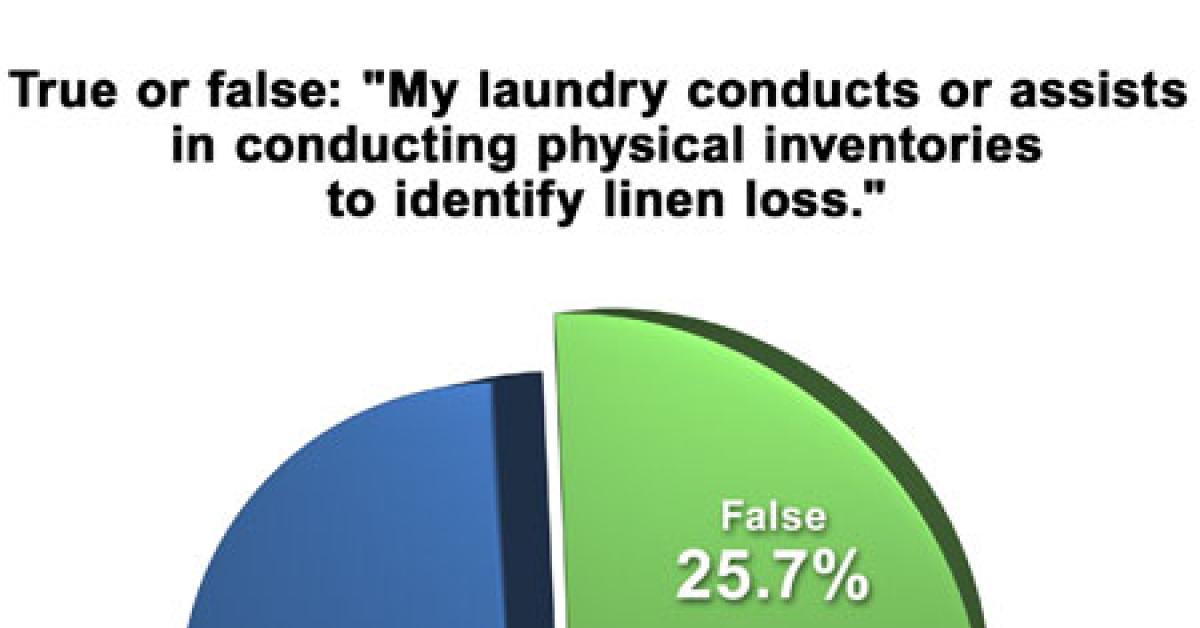CHICAGO — When it comes to the problems laundry managers or their customers face, linen loss is one of the biggest, according to respondents to American Laundry News’ latest Your Views survey.
More than 55% of managers who took the survey say that linen loss “is one of our biggest issues.” In comparison, 27.6% say that linen loss is “no worse than any other issue” the laundries or their customers face.
For nearly 8% of respondents, however, “it’s the No. 1 problem.” With all of the concern about linen loss, that begs the question: Where does the linen go?
When it comes to patients or guests that use the linens at facilities, most managers taking the unscientific survey say that improper disposal is the most common factor. Almost 60% say that patients or guests throw away items before the laundry can attempt to clean them.
Close to 53% of respondents say that patients or guests believe that linens or textiles can be taken after a stay or visit. Fifty percent say patients or guests take the linens even though they know the items are supposed to stay at the facility. Another 50% of managers who took the survey say that linens/textiles are lost because the items are used improperly.
“Patient transfers result in our linen ending up in facilities we do not service,” writes a respondent. “We rarely get the linen back. This is loss, but not abuse or theft.”
Linen loss isn’t limited to healthcare patients or hospitality guests. Respondents indicate employees also contribute to loss.
“Abuse/improper use” by employees was the leading cause of linen loss attributed to on-site staff, according to 65.2% of managers who responded. The second-most selected answer was “improper disposal” by staff (63.8%).
“In my mind, it’s more about, ‘What steps can we take to preserve our linen from staining, losing its fluff and developing holes?’” a respondent writes. “A recent article about using lower heat and shorter drying time was quite good, as it provided me with consensus from the industry that I could share impartially with my staff.”
Another writes, “Both the procurement and wash process are big contributors to linen loss as well. To be responsible, you must buy the proper linen items and then wash them in a manner that maintains tensile strength and is positive to the life of use.”
Managers who took the survey say that in terms of staff theft, most loss was “inadvertent theft” (52.2%), such as employees wearing scrubs or lab coats home. “Deliberate theft” was selected by only 34.8% of respondents.
“The individuals don’t have an investment in the linen items and have virtually no interest in the proper handling and disposal of the items,” a respondent writes. “No skin in the game!”
“I sometimes feel that there is a sense of entitlement that leads direct patient care staff to believe that it’s not their responsibility to take care of the linen and make sure to use it wisely,” writes another.
While some of the managers who took the survey believe that some individuals don’t care about the linens used, more than three-quarters of respondents believe that their company or institution values its linen enough to commit attention and resources to protecting it.
Interestingly, only about 55% of those who took the survey say that their laundry uses linen management software to track usage.
However, almost 75% of respondents say, “My laundry conducts or assists in conducting physical inventories to identify linen loss.” In addition, 72.5% of managers who took the survey say their laundry offers loss prevention education to end-users or customers.
While the Your Views survey presents a snapshot of readers’ viewpoints at a particular moment, it should not be considered scientific. Due to rounding, percentages may not add up to 100%.
Subscribers to American Laundry News e-mails are invited to take the industry survey anonymously online each month. All managers and administrators of institutional/OPL, cooperative, commercial and industrial laundries are encouraged to participate, as a greater number of responses will help to better define operator opinions and identify industry trends.
Have a question or comment? E-mail our editor Matt Poe at [email protected].


